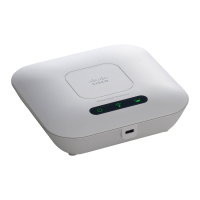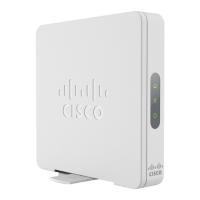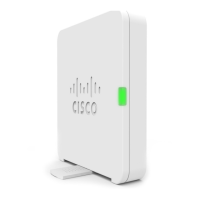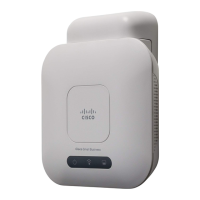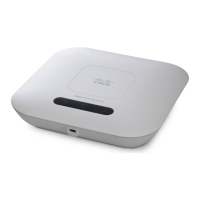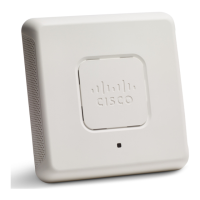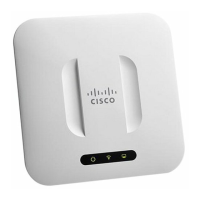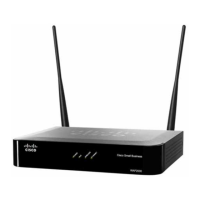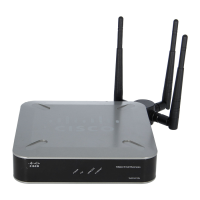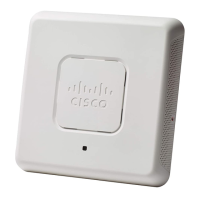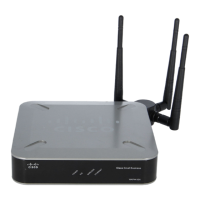Step 3 If VAP0 is the only VAP configured on the system, and you want to add a VAP, click ✚. Then, check the VAP.
Step 4 Configure the following:
• VLAN ID — Specify the VLAN ID of the VLAN to associate with the VAP.
Be sure to enter a VLAN ID that is properly configured on the network. Network problems can result if the VAP
associates the wireless clients with an improperly configured VLAN.
When a wireless client connects to the WAP device by using this VAP, the WAP device tags all traffic from the
wireless client with the configured VLAN ID, unless you enter the port VLAN ID or use a RADIUS server to assign
a wireless client to a VLAN. The range for the VLAN ID is from 1 to 4094.
If you change the VLAN ID to a different ID than the current management VLAN ID, the WLAN clients associated
with this specific VAP cannot administer the device. You can verify the configuration of the untagged and management
VLAN IDs on the LAN page. See IPv4 Configuration, on page 17 for more information.
• SSID Name — Enter the name for the wireless network. The SSID is an alphanumeric string of up to 32 characters.
Choose a unique SSID for each VAP.
If you are connected as a wireless client to the same WAP device that you are administering, resetting the SSID will
cause you to lose connectivity to the WAP device. You will need to reconnect to the new SSID after you save this
new setting.
• SSID Broadcast — Enables and disables the broadcast of the SSID.
Specify whether to allow the WAP device to broadcast the SSID in its beacon frames. The Broadcast SSID parameter
is enabled by default. When the VAP does not broadcast its SSID, the network name is not shown in the list of
available networks on a client station. Instead, you must manually enter the exact network name into the wireless
connection utility on the client so that it can connect.
Disabling the broadcast SSID is sufficient to prevent clients from accidentally connecting to your network, but it
does not prevent even the simplest of attempts by a hacker to connect or monitor unencrypted traffic. Suppressing
the SSID broadcast offers a very minimal level of protection on an otherwise exposed network (such as a guest
network) where the priority is to make it easy for clients to get a connection and where no sensitive information is
available.
WMF — The Wireless Multicast Forwarding provides an efficient way to transfer multicast traffic on the wireless
device and overcome multicast transmission issues on the WLAN using the repeated unicast or multicast the frames.
• Security — Choose the type of authentication required for access to the VAP. The options are:
• None
• WPA Personal
• WPA Enterprise
If you choose a security mode other than None, additional fields appear. For more information on configuring the wireless
security settings, see Configuring Security Settings, on page 54.
We recommend using WPA Personal or WPA Enterprise as the authentication type as it provides stronger security
protection.
Static WEP can be used for wireless computers or devices that do not support WPA Personal and WPA Enterprise.
To set security with Static WEP, configure the radio as 802.11a or 802.11b/g mode. The 802.11n mode restricts
the use of Static as the security.
Note
Cisco WAP150 Wireless-AC/N Dual Radio Access Point with PoE / Cisco WAP361 Wireless-AC/N Dual Radio Wall Plate Access Point with PoE
53
Wireless
Configuring VAPs
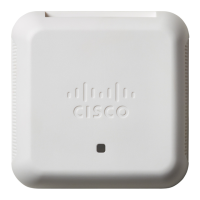
